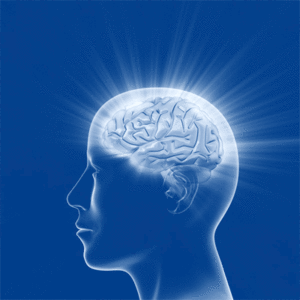 If you were old enough to experience the cultural tides of the 1960s, you most certainly would have heard of Dr. Timothy Leary. He was the flamboyant Harvard professor whose research on psychedelics led him to believe that “the effects of consciousness expanding drugs will… transform our concepts of human nature, of human potential, of existence.” In that spirit, he also admonished America’s youth to: “Turn on. Tune in. Drop out.” Such commentary and the associated moral panic contributed to rendering all such drugs illegal in 1970.
If you were old enough to experience the cultural tides of the 1960s, you most certainly would have heard of Dr. Timothy Leary. He was the flamboyant Harvard professor whose research on psychedelics led him to believe that “the effects of consciousness expanding drugs will… transform our concepts of human nature, of human potential, of existence.” In that spirit, he also admonished America’s youth to: “Turn on. Tune in. Drop out.” Such commentary and the associated moral panic contributed to rendering all such drugs illegal in 1970.
That’s pretty much all I knew about psychedelics until I picked up Michael Pollan’s latest book, How To Change Your Mind: What the New Science of Psychedelics Teaches Us About Consciousness, Addiction, Depression, and Transcendence. He serves up a modern history of these substances, a first-hand account of their use, and a bit of neuroscience to explain their effects.
Scientific research on psychedelics started in the mid-20th Century after a Swiss biochemist by the name of Albert Hoffmann synthesized LSD in 1938. He was searching for pharmaceutical relief for those with terminal illness or psychiatric disorders. His invention did not gain much traction until he took a second look at it in 1943. He used himself as a test subject and realized that he had something very powerful on his hands. In 1958, he identified the active ingredient in psychedelic mushrooms (psilocybin) and devised a mechanism to synthesize it.
Psychedelics were used successfully in the 1950s and 1960s in controlled settings to treat addiction, depression, obsessive compulsive disorder, schizophrenia, autism, and end-of-life anxiety. Forty thousand people participated in clinical trials, and thousands of peer-reviewed scientific papers were published. Unfortunately, all of the countercultural baggage associated with psychedelics put the kibosh on funded laboratory research.
For the next 25 years, psychedelic experimentation went underground. A dedicated group of practitioners continued to deploy these substances to help their patients. They acknowledged the importance of “set and setting” in delivering experiences that would prove forwarding. They knew that psychedelics had expectancy effects – i.e., one tended to have the experience for which one was primed. As such, patients had to be screened carefully, and trained guides needed to provide suitable instructions prior to administering the drug. Treatment rooms were appropriately pleasing with soothing sights, sounds, and smells abounding. And patients were told that they would not be left unattended during any part of their experience.
While many practitioners focused on attending to persons with physical or psychological challenges, another collective conducted experiments to measure the ways in which psychedelics might improve the lives of “healthy” individuals. Early research suggested the potential to transcend mental limitations and improve problem-solving skills. (Apparently, many Silicon Valley pioneers found this possibility compelling.) They could also become less judgmental, less rigid, more open, and less defended. Many participants reported that their use of mind-expanding substances occasioned mystical experiences for which there was sustained personal and spiritual significance.
In 2006, funded (legal) psychedelic research began anew to address intractable psychiatric problems for which the earlier research had shown promising results. These renewed efforts had the advantage of brain imaging technology that would enable neuroscientists to understand what was going on inside the brain during psychedelic trips. The results proved fascinating.
It turns out that our brains have what’s called a Default Mode Network (DMN) that sits atop the functional hierarchy of the brain. It filters incoming sensory data while coordinating signals across the brain regions. Formed in late child development, it is closely associated with our egos – who we believe ourselves to be, how we see ourselves in relation to the world, what we like/dislike, what we deem right/wrong, etc. While it gives us a sense of self, it also creates a sense of separation from others.
Test subjects demonstrate decreased blood flow (i.e., activity) in the DMN on psychedelics. When this part of the brain goes “off line,” a wholly new state of consciousness can emerge – one that opens the floodgates to sensory data while diminishing boundaries between “ME” and everything else. It also creates the opportunity for the disparate brain regions to forge new connections. As Pollan says, when the “superhighways” in the brain stop working, the regions start using the old country back roads to communicate. Lasting change can occur when exercising these new connections.
So why have these drugs been effective for treating folks in challenging circumstances? An overactive DMN can trap people in an endless loop of rumination. Breaking that cycle can provide relief. For example, patients with terminal illness can break free of their anxiety, depression, and “Why Me?” thoughts and focus on a heightened sense of connection with loved ones. Persons suffering with depression can experience relief from the mental prison that renders feelings of disconnection. Addicts may see the world as offering so many wonders that they’ll forgo destructive behaviors that rob them of exploring these possibilities.
As an interesting aside, highly experienced mediators generate states of consciousness (as measured by brain scans) that bear a striking resemblance to persons on psychedelic drugs. It’s yet another argument for finding a comfortable lotus position and developing this skill.
Pollan does a yeoman’s job describing the erstwhile indescribable feeling of being under the influence of a psychedelic substance. As one who went into the experience with a healthy dose of skepticism (and trepidation), he gives the experience its due without underselling or overblowing its merits. Suffice it to say, it piqued my interest.